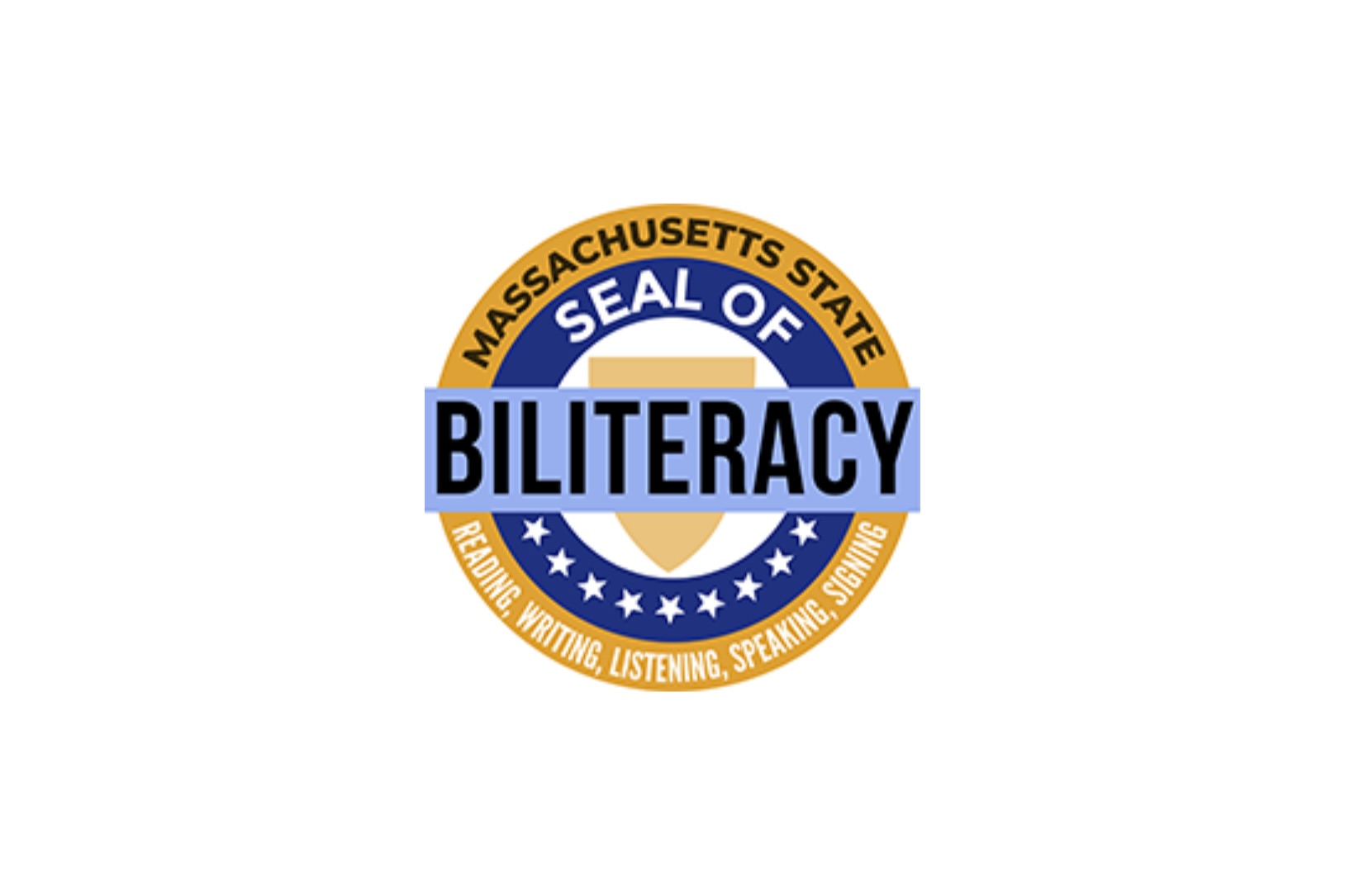World language students at Wayland High School were given the chance to demonstrate their language proficiency through the Massachusetts State Seal of Biliteracy and a testing site called Assessment of Performance toward Proficiency in Languages (AAPPL) during the first two weeks of February. Students who score above a certain standard in four categories they are tested on earn recognition for their bilingualism and are awarded with the Seal of Biliteracy.
“The Seal of Biliteracy is issued by the state of Massachusetts,” WHS Spanish teacher and language department head Alaina Ghetti said. “Most states have some form of a Seal of Biliteracy at this point, and the goal is to acknowledge students who, at the time they graduate from high school, have demonstrated biliteracy by their English MCAS scores in the state of Massachusetts, and another exam showing proficiency in a second language other than English.”
In addition to offering testing opportunities in three of the four languages offered at WHS – specifically French, Spanish and Mandarin Chinese – the state also offers testing for several other languages. WHS uses a testing site AAPPL, which offers assessments on additional languages, including Portuguese, Russian and Japanese, among others.
“With less common home languages, we use a different brand of test,” Ghetti said. “For example, Lithuanian or Hebrew or Vietnamese tests that might not be available to do in the AAPPL, but are available from other testing companies.”
The testing process for the Seal of Biliteracy is formatted similarly to other standardized state testing, with the test occurring during normal school hours, resulting in students missing class. Some students who elect to take the AAPPL tests are seniors who are in Advanced Placement (AP) language courses, though the test is also available to non-AP students, as well as underclassmen.
“I’m in Honors French, so I wasn’t necessarily required to take it, but I decided to,” senior Nora Edouarzin said. “I thought it was helpful to see where my French skills lie.”
In order to receive the Seal of Biliteracy, a student must score above an intermediate high in all four sections: Interpretive Reading, Presentational Writing, Interpretive Listening and Interpersonal Speaking. Students who receive an Intermediate-5 or above on each section as well as students who receive an Advanced-1 or above, with distinction, will be awarded the Seal of Biliteracy. Students are also given the opportunity to retake any of the sections to reach a higher proficiency.
“What I really like about the AAPPL test is that we get the chance to retake one of the four sections if we didn’t pass the first time,” senior CC Haddad said. “If you take the test, and pass three out of the four sections, you get the chance to retake the section that you failed. I think this is great because, with big tests like this, nerves often get in the way of good performance, so being able to retake it allows students to show what they actually know with less nerves.”
Students awarded the Seal of Biliteracy receive an actual seal on their diploma, as well as a cord to wear at graduation. Furthermore, some colleges count the seal towards college credits in the same way as an AP test does. This can allow students to bypass some of the language requirements that a college may have.
“I chose to take the AAPPL because I know some of my colleges will take the Seal as language credit,” senior Ciaran Murphy said. “Since I’m hoping to do a very course-heavy major, I need to cut down on every course I can outside of the major.”
Some WHS language teachers encourage students, particularly seniors, to take the AAPPL as a way to prepare for the AP test. Some teachers say that the AAPPL, which is somewhat similar in style and content to the language AP tests, can serve as a good “practice round” for the actual AP test.
“The test was exhausting,” Murphy said. “We just had to keep going and going for hours in a second language, which really just wears you out. Preparing for the AAPPL helped to make me aware of where my strengths and weaknesses are language-wise.”
No matter the potential benefits that students may receive from taking the test, some language teachers assert that the seal itself serves as an exceptional commendation of a student’s foreign language skills. Some teachers have expressed gratitude for having a way to acknowledge student bilingualism and biliteracy, and all the hard work that comes along with it.
“There’s sort of two different types of students that might earn the seal,” Ghetti said. “There are students who speak another language at home, and we’re proud to honor their multicultural, multilingual background, and there are also students who speak English at home, but have worked really hard to study a second language at school, and we want to honor those achievements as well. So it’s a way to sort of recognize multiculturalism in our community and the hard work in our language classrooms that students are doing to achieve high levels of proficiency.”




